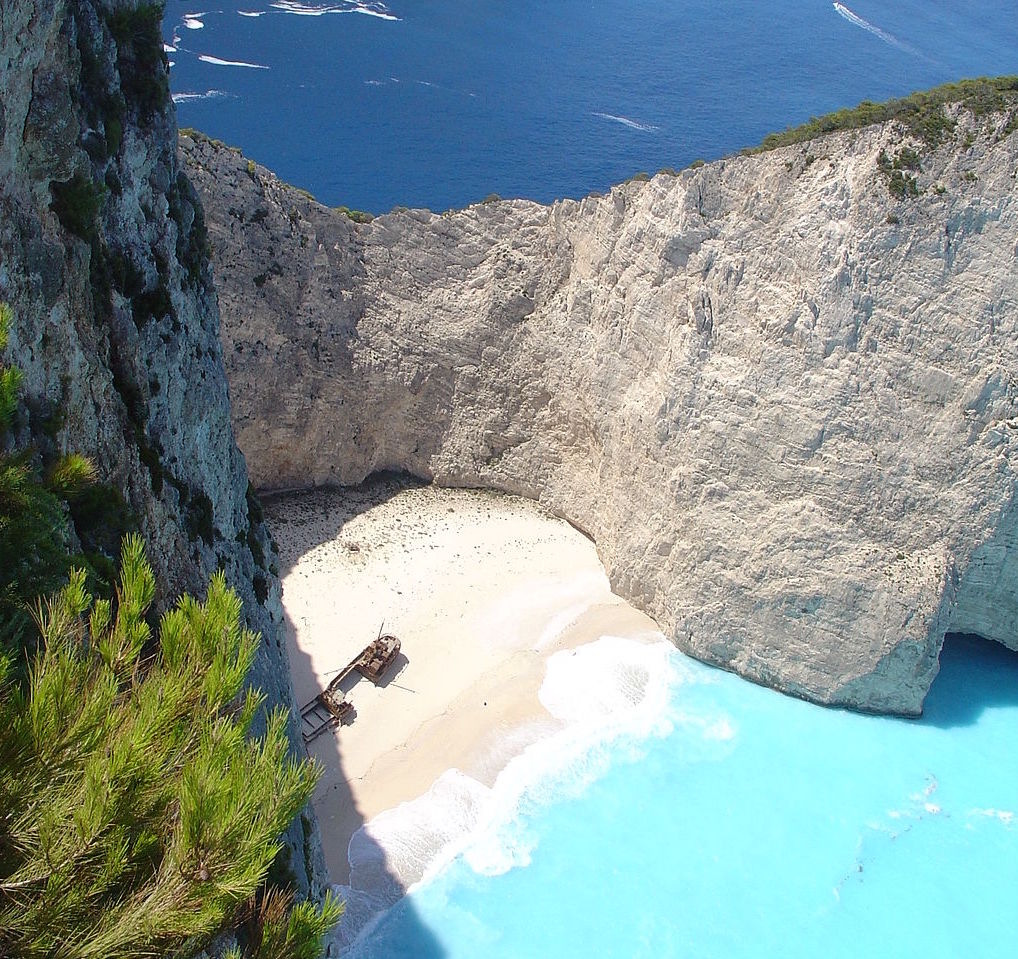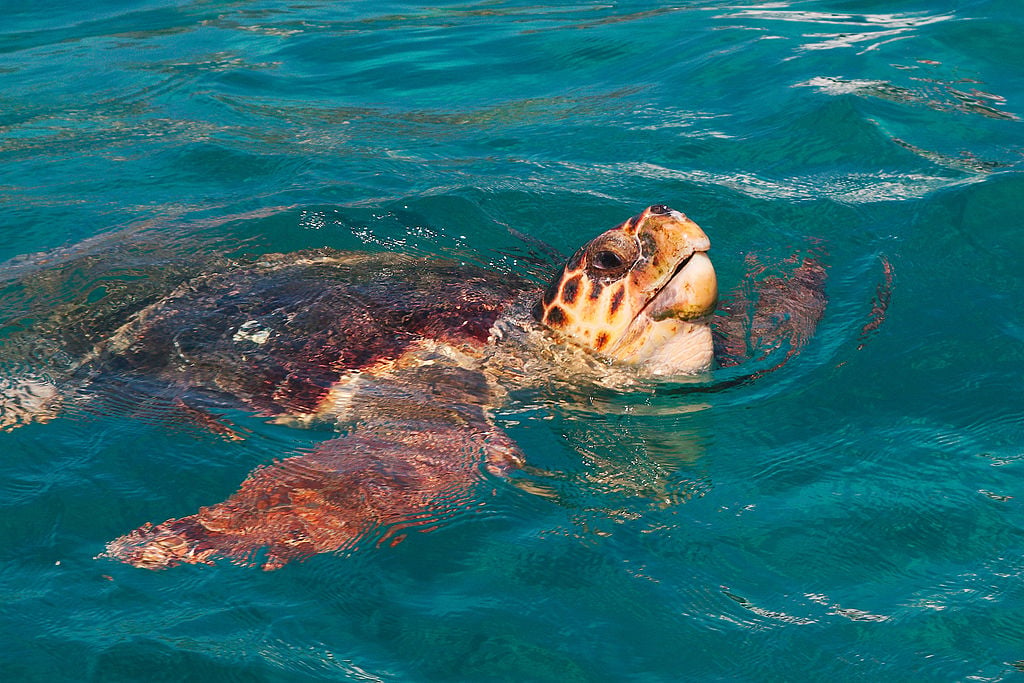
Zakynthos is one of the most beautiful destinations Greece has to offer. Rich with history, this Ionian Sea island is famous for its beaches, especially Navagio Beach, known as “Shipwreck Beach,” which has continuously ranked as one of the world’s best beaches.
Zakynthos is the third largest of the seven Ionian Islands that line the Ionian Coast of Greece. The island is more than just scenic beaches however. It also has deep cultural roots in Ancient Greek mythology as well as the Greek Orthodox Church.
Zakynthos has a rich history even for Greece
Zakynthos is believed to have adopted its name from the son of Dardanus, who was a son of Zeus. According to Homer, Zakynthos was the first to sail to the island and settle it, and it still bears his name to this day.
Zakynthos became a contested area rife with wealthy and powerful families due to its prime location on the Ionian coast. Christianity became widespread on Zakynthos during the 3rd century AD rule of Constantine the Great. The Ionian Islands became a colony of Venice after the Treaty of Constantinople was signed in 1479 and remained under Venetian rule until the end of the Venetian Republic in 1797.
This gives Zakynthos and the other Ionian Islands a slightly unique cultural history compared to the rest of Greece, which was under Turkish rule while the islands were colonies of the Venetian Republic. Although the island was used for mercantile purposes that gave rise to aristocracy across the island, the Venetians encouraged art and culture on the island, and Greek religious practices remained strong.
Greek Orthodox tradition runs deep on the Ionian island. The patron saint of Zakynthos is St. Dionysios, who was born Draganigos Sigouros in 1547. He was a member of the Sigouros, a prominent mercantile family that had descended from Norman De Segur, an early settler of Zakynthos. Draganigos was a devout student of the Orthodox priests, becoming fluent in Greek, Italian, and Latin. He was made a monk in 1568 and quickly rose the ranks in the church, becoming a deacon and a priest.
Dionysios eventually decided to travel to the Holy Land by way of Athens. After arriving in Athens, he was made Archbishop of Aigina despite his personal protests, made in all humility. Around 1589, the Patriarch of Constantinople made Archbishop Dionysios the Archbishop of Zakynthos, and he remained in this position until a permanent Archbishop arrived.
Draganigos died in 1622 and was later named a saint of the Orthodox Church in 1703. His feast day is widely celebrated in Zakynthos.
Zakynthos after the demise of the Venetian Republic
After the demise of the Venetian Republic in 1797, Zakynthos was fought after between France, England, Russia and Turkey for well into the mid-19th century, until the Ionian Islands finally became a part of the Greek State on May 21, 1864.
Zakynthos also has a modern history of heroism and bravery during the Second World War.
On September 9, 1943, during the Nazi occupation of Greece, the German commander of Zakynthos, an officer named Berenz, asked the island’s mayor, Loukas Karrer, to give him a full list of every single one of the Jewish people who lived on the island.
Shocked by the demand, and knowing what would certainly happen to all these individuals, Mayor Karrer went to consult with the bishop of the island, Chrysostomos.
They both took the courageous—and obviously perilous—decision to deny writing down the names of these people.
The Natural Wonders of Zakynthos
Zakynthos’ beautiful scenery preserves a deep ecological history, where ecosystems and animals live together undisturbed. These natural wonders are available for visitors and locals alike to experience but are also controlled so that the native flora and fauna can exist as peacefully as possible at the National Marine Park of Zakynthos.
If you ever decide to visit the Marine Park, keep in mind that it is a completely natural, undeveloped island which does not have any tourist amenities whatsoever.
For this reason, it is advised that visitors take enough supplies with them for their trips and that they leave no trace of their visit nor cause any distress to the endangered marine animals there.
The National Marine Park of Zakynthos was established in 1999 and is the first national park created for the protection of sea turtles in the Mediterranean. It is part of the Natura 2000 ecological network.
The islet of Marathonisi is a protected breeding area for the loggerhead sea turtle, which bears the scientific name “Caretta Caretta.”
The loggerhead is a species of oceanic turtle which lives in various locales around the world. They can be found in the Atlantic, Indian, and Pacific Oceans, as well as in the Mediterranean sea.
Unfortunately, despite being prevalent in many of the world’s seas, the loggerhead has a low reproductive rate; females lay an average of four groups of eggs at one time and then produce no eggs at all for a span of two to three years.
Sea turtles in Zakynthos face threats from human development
The loggerhead is the world’s largest hard-shelled turtle with a lifespan of 47 to 67 years.
It is also the world’s second largest extant turtle after the leatherback.
Adults can weigh from 80 to 200 kg (180 to 440 pounds), but their average weight is usually about 135 kg (298 pounds). The largest loggerhead specimen ever caught weighed in at an astounding 545 kg (1,202 pounds).
The biggest threat these gentle giants face is loss of nesting habitat due to coastal development, predation of nests, and human disturbances, such as housing developments and coastal lighting.

Even the seemingly innocuous lights along beachfront homes and other buildings can wreak havoc with loggerhead survival since they may cause disorientation during the emergence of hatchlings as they race toward the sea.
Female loggerheads swim through the pristine waters of Marathonisi each and every summer to lay their eggs on its sandy beaches.
For this reason, if anyone ever decides to visit this special, protected islet, they should take extra precautions to not disturb the environment in any way during their trip, especially the sandy beach which is critical to the survival of the loggerhead.
All marine parks have limited recreational use and are often set aside to preserve a specific habitat, to ensure that their fragile ecosystem will be protected for the animals which live, breed, or lay eggs there.
This is no different in Zakynthos Marine Park in the waters around Turtle Island, but there is yet another endangered species which is also protected there.
The second species is the “Monk seal,” or Monachus Monachus, which annually makes its way to the islet to reproduce and rest. Despite their large size, these seals are believed to be the most endangered carnivorous aquatic species in the entire world.
Zakynthos’ Shipwreck Cove
This is perhaps the most photographed shipwreck in the world. Lying upright on a sandy beach on the northwestern coast of Zakynthos since October of 1980, the wreck of the “Panagiotis” is visited by millions of tourists.
It has been rumored that the ship was smuggling contraband, including cigarettes and alcohol, when it ran aground on what was originally known as “Agios Georgios Beach” during stormy weather and low visibility.
The ship was immediately abandoned by its crew, and some of them, mostly Greek sailors, were arrested, along with their captain. However, they were all later cleared of the smuggling charges.
Rumor still has it, however, that locals stripped the cargo of contraband cigarettes and alcohol. It is said that the island did not import cigarettes for months after the accident.
Initially, the people of Zakynthos were concerned that the wreck could damage the image of the island and deter tourism. How ironic it is then, that “Navagio Beach,” or “Shipwreck Beach,” has become the most popular tourist destination in Zakynthos.
Recently, the captain of the ship, Kefalonia-born Charalambos Kompothekras–Kotsoros, released his account of what actually happened.
“I reported the accident to the authorities, but due to the fact that the beach was not accessible on foot by land, we were not able to protect the ship from thieves and other dangers. As a result, part of the shipment was stolen, along with various vessel equipment (radar, VHF radio, etc),” the captain relates.
“The outcome was outstanding, as during the first days of the operation, all the stolen items, as well as the stolen part of the shipment, were found in local villages nearby, and 29 persons in total were persecuted and jailed during the following months after the trials were completed,” Kompothekras–Kotsoros explains.
After being cleared from all accusations by the court, the authorities requested the captain of the Panagiotis to remove the vessel by his own means. When he visited the site to see how he could execute the salvaging of the ship, he was so astonished by the beauty of the rusting carcass that he decided to leave it just as is.
Thus was born “Navagio Beach,” or “Shipwreck Beach,” to serve as a source of endless fascination to all those who visit Zakynthos.
See all the latest news from Greece and the world at Greekreporter.com. Contact our newsroom to report an update or send your story, photos and videos. Follow GR on Google News and subscribe here to our daily email!



